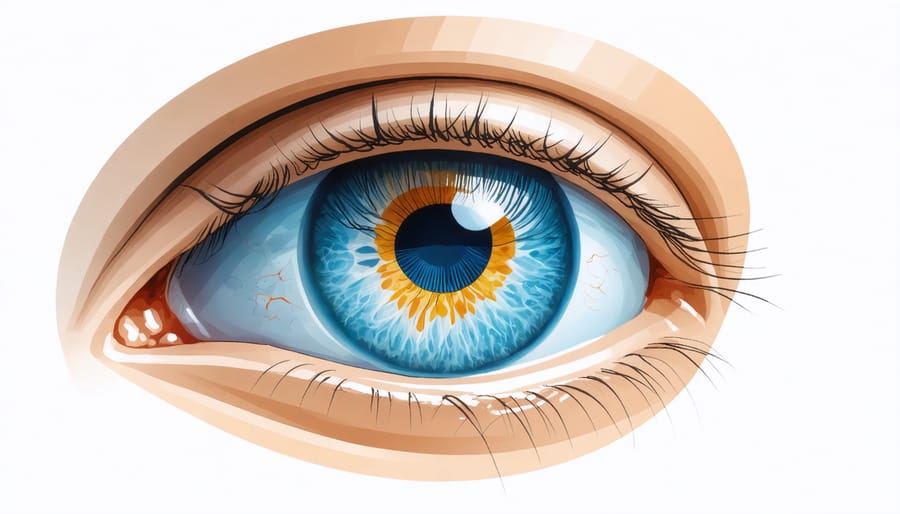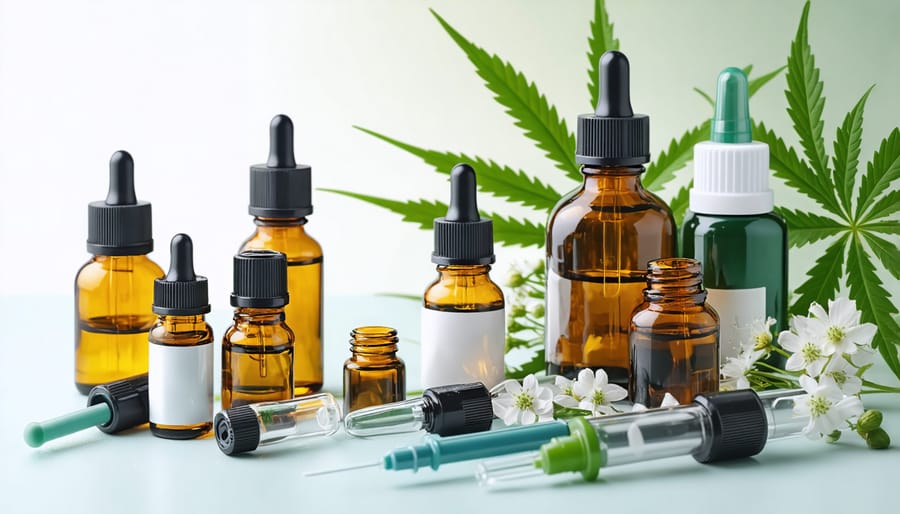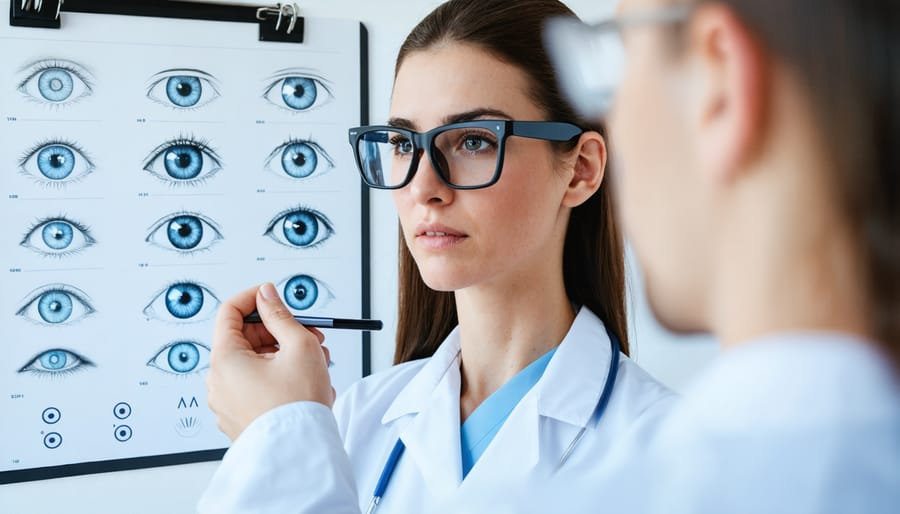Groundbreaking research reveals CBD oil’s potential as a complementary treatment for glaucoma, offering hope to millions affected by this sight-threatening condition. While traditional glaucoma medications remain essential, studies suggest that CBD’s neuroprotective properties – similar to those found in CBD oil for dogs Canada – may help reduce intraocular pressure and protect retinal cells. However, the relationship between CBD and glaucoma is complex, requiring careful consideration and professional guidance.
Recent clinical trials have demonstrated that specific CBD formulations can interact with the endocannabinoid system in our eyes, potentially offering relief from glaucoma symptoms without the psychoactive effects associated with traditional cannabis use. This discovery has sparked intense interest among eye care professionals and patients seeking alternative or supplementary treatment options for managing their condition.
As we explore the intersection of natural remedies and conventional medicine, understanding CBD’s role in glaucoma management becomes increasingly crucial. This article examines the latest scientific evidence, potential benefits, risks, and practical considerations for those considering CBD oil as part of their glaucoma treatment plan.
Understanding Glaucoma and Current Treatments
What is Glaucoma?
Glaucoma is a complex group of eye conditions that can significantly impact your eye health indicators. It primarily affects the optic nerve, which is responsible for transmitting visual information from your eyes to your brain. The condition typically develops when fluid builds up in the front part of the eye, creating pressure that damages the optic nerve.
There are two main types of glaucoma: open-angle and angle-closure. Open-angle glaucoma, the most common form, develops gradually and often without noticeable symptoms until vision loss occurs. Angle-closure glaucoma, though less common, can develop suddenly and requires immediate medical attention.
Common symptoms include gradual loss of peripheral vision, eye pain, headaches, blurred vision, and seeing halos around lights. Risk factors include age (especially over 60), family history, certain medical conditions, and ethnicity. Early detection through regular eye examinations is crucial, as vision loss from glaucoma is irreversible but can be prevented with proper treatment and management.

Traditional Treatment Options
Traditional glaucoma treatment typically begins with comprehensive eye examination procedures to determine the severity and type of the condition. The most common first-line treatment involves prescription eye drops that either reduce fluid production in the eye or improve its drainage, effectively lowering intraocular pressure (IOP).
Several classes of medications are commonly prescribed, including prostaglandin analogs, beta-blockers, alpha-adrenergic agonists, and carbonic anhydrase inhibitors. These medications must be used consistently, often multiple times daily, to maintain their effectiveness.
For patients who don’t respond adequately to medication, laser therapy offers another treatment option. Procedures such as laser trabeculoplasty can help improve fluid drainage. In more severe cases, traditional surgery might be necessary, with trabeculectomy being the most common surgical intervention.
While these treatments are generally effective, they can come with side effects ranging from mild eye irritation to more serious complications. Regular monitoring and adjustment of treatment plans are essential for optimal outcomes in managing glaucoma.
CBD Oil and Eye Pressure

How CBD Affects Eye Pressure
Research has shown that CBD’s interaction with eye pressure is complex and sometimes contradictory to what we might expect. While THC, another cannabis compound, has been demonstrated to lower intraocular pressure (IOP), CBD appears to have different effects. Studies indicate that CBD may temporarily increase eye pressure in some cases, which could potentially counteract the beneficial effects of THC.
The mechanism behind this interaction involves CBD’s effect on the endocannabinoid system, particularly the CB1 and CB2 receptors found in eye tissues. These receptors play a crucial role in regulating eye pressure and fluid dynamics within the eye. When CBD interacts with these receptors, it can influence the production and drainage of aqueous humor, the clear fluid that maintains eye pressure.
Recent research suggests that CBD’s impact on eye pressure may vary depending on the dosage, method of administration, and individual patient factors. Some studies have found that CBD might interfere with the eye’s natural pressure-regulation mechanisms, potentially leading to temporary increases in IOP.
It’s important to note that the current scientific understanding of CBD’s effects on eye pressure is still evolving. While some laboratory studies show promising results, more clinical research is needed to fully understand the relationship between CBD use and glaucoma management. Patients considering CBD for glaucoma should always consult with their eye care professional before making any changes to their treatment plan.
Current Research Findings
Recent research on CBD oil’s role in glaucoma treatment has yielded mixed results, challenging some traditional assumptions. A 2018 study published in the Journal of Eye Research found that while CBD temporarily lowered intraocular pressure (IOP), the effect was short-lived and potentially inconsistent among patients. Research has also shown that CBD effects on vision may be more complex than initially thought.
Clinical trials conducted at the University of Indiana revealed that CBD might actually increase IOP in some cases, particularly when used in isolation without other cannabis compounds. This finding has prompted researchers to investigate the interaction between CBD and the endocannabinoid system specific to eye tissues.
However, promising results have emerged regarding CBD’s neuroprotective properties. A 2020 study demonstrated that CBD could help protect retinal cells from damage, though this benefit may not directly translate to glaucoma management. Current research is focusing on developing targeted CBD delivery methods that could maximize benefits while minimizing potential risks.
Medical professionals emphasize the need for larger, more comprehensive clinical trials before making definitive conclusions about CBD’s role in glaucoma treatment. Patients are advised to consult eye care specialists before incorporating CBD oil into their treatment regimen, as individual responses may vary significantly.
Benefits and Risks
Potential Benefits
CBD oil shows several promising potential benefits for individuals with glaucoma, particularly in relation to intraocular pressure (IOP) management. Research suggests that CBD’s interaction with the endocannabinoid system may help regulate eye pressure, which is crucial for preventing optic nerve damage and preserving vision.
One significant advantage of CBD oil is its natural anti-inflammatory properties. These properties may help reduce inflammation in the eye, which can be beneficial for various types of glaucoma. Additionally, CBD’s neuroprotective qualities could potentially help shield the optic nerve from further damage, though more research is needed to fully understand this mechanism.
Studies indicate that CBD might also help manage some of the secondary symptoms associated with glaucoma, such as anxiety and discomfort. The compound’s natural calming effects could benefit patients who experience stress related to their condition or its treatment.
Another potential advantage is CBD’s relatively good safety profile when used appropriately. Unlike some traditional glaucoma medications, CBD typically produces fewer side effects in most users, though individual responses may vary. This could make it an attractive complementary option for patients who struggle with conventional treatment side effects.
The versatility of CBD oil administration methods provides flexibility for patients. Whether applied topically, taken orally, or used sublingually, patients can work with their healthcare providers to find the most effective delivery method for their specific situation.
However, it’s essential to note that while these benefits are promising, CBD should not be considered a replacement for prescribed glaucoma treatments without proper medical consultation and guidance.
Safety Concerns and Considerations
While CBD oil shows promise in managing glaucoma symptoms, there are several important safety considerations to keep in mind. First, CBD can interact with other medications commonly prescribed for glaucoma, particularly those that affect intraocular pressure. Always consult with your eye care professional before incorporating CBD oil into your treatment regimen.
Some studies indicate that long-term CBD use might actually increase intraocular pressure in certain individuals, potentially counteracting its beneficial effects. This highlights the importance of regular monitoring by a healthcare provider when using CBD oil for glaucoma management.
Patients should be aware of potential side effects, which may include dry mouth, drowsiness, and changes in appetite. While these effects are generally mild, they can impact daily activities and quality of life. Additionally, the quality and concentration of CBD products can vary significantly between manufacturers, making it crucial to choose products from reputable sources with third-party testing.
Pregnant women, nursing mothers, and individuals with liver conditions should exercise particular caution with CBD use. There’s limited research on CBD’s effects in these populations, and potential risks may outweigh benefits.
The legal status of CBD products varies by region, and some products may contain trace amounts of THC, which could have implications for drug testing and legal compliance. It’s essential to understand local regulations and choose products that align with legal requirements.
Remember that CBD oil should not be considered a replacement for conventional glaucoma treatments without proper medical supervision. Any changes to your glaucoma management plan should be discussed with your healthcare provider to ensure optimal eye health outcomes.
Patient Guidelines and Medical Advice

Talking to Your Eye Doctor
Open communication with your eye care provider is essential when considering CBD oil for glaucoma management. During your regular eye examinations, be prepared to discuss your interest in CBD treatment openly and honestly. Bring a list of specific questions and concerns, along with detailed information about any CBD products you’re currently using or considering.
Share important details with your doctor, including:
– The type and concentration of CBD products you’re interested in
– Your current glaucoma treatment plan
– Other medications you’re taking
– Any side effects you’ve experienced
– Your reasons for considering CBD as a treatment option
Remember that your eye doctor’s primary concern is your eye health and safety. They can provide evidence-based guidance on whether CBD oil might be appropriate for your specific situation and how it could interact with your existing treatments. They may also discuss alternative options you haven’t considered.
Be receptive to your doctor’s professional opinion, even if it differs from your expectations. If your doctor advises against CBD use, ask about their reasoning and what alternative treatments they recommend. This collaborative approach ensures you receive the most appropriate and effective care for your glaucoma management.
Legal Considerations
The legal status of CBD oil for glaucoma treatment varies by jurisdiction and continues to evolve. In the United States, CBD derived from hemp (containing less than 0.3% THC) became federally legal under the 2018 Farm Bill. However, state laws regarding CBD use can differ significantly, and some states maintain stricter regulations.
When considering CBD oil for glaucoma, it’s crucial to understand that while CBD products are widely available over-the-counter, they are not FDA-approved for treating glaucoma. Medical professionals generally recommend obtaining CBD through proper medical channels where available, particularly when using it for a serious condition like glaucoma.
Patients should be aware that some medical marijuana programs specifically include glaucoma as a qualifying condition, but these programs typically involve products containing both CBD and THC. Before starting any CBD treatment, consult with an eye care professional, as they can provide guidance on local regulations and prescription requirements.
International laws regarding CBD vary considerably. While some countries have embraced CBD products for medical use, others maintain strict prohibitions. When traveling, patients should research destination countries’ regulations, as carrying CBD products across borders may be illegal.
Remember that purchasing CBD from reputable sources is essential, as the market remains largely unregulated. Look for products with third-party testing and clear labeling of contents.
The relationship between CBD oil and glaucoma management is complex and continues to evolve as research progresses. While some studies suggest CBD may have potential benefits for managing intraocular pressure, the current evidence remains limited and sometimes contradictory. It’s crucial to understand that CBD oil should not be considered a replacement for prescribed glaucoma medications or traditional treatments.
Before considering CBD oil as part of your eye health regimen, consulting with an eye care professional is essential. They can evaluate your specific condition, review your medical history, and provide personalized guidance based on the latest scientific evidence. This is particularly important because CBD can interact with other medications and may not be suitable for everyone.
Remember that glaucoma is a serious condition that requires consistent monitoring and professional medical care. While natural alternatives may seem appealing, managing glaucoma effectively requires a comprehensive treatment approach under medical supervision. Your eye care provider can help you understand the potential risks and benefits of CBD oil within the context of your overall treatment plan.
Stay informed about new developments in glaucoma treatment options, but always prioritize evidence-based treatments and professional medical advice. Your vision is precious, and making informed decisions in partnership with healthcare providers is the best way to protect it for the long term.

